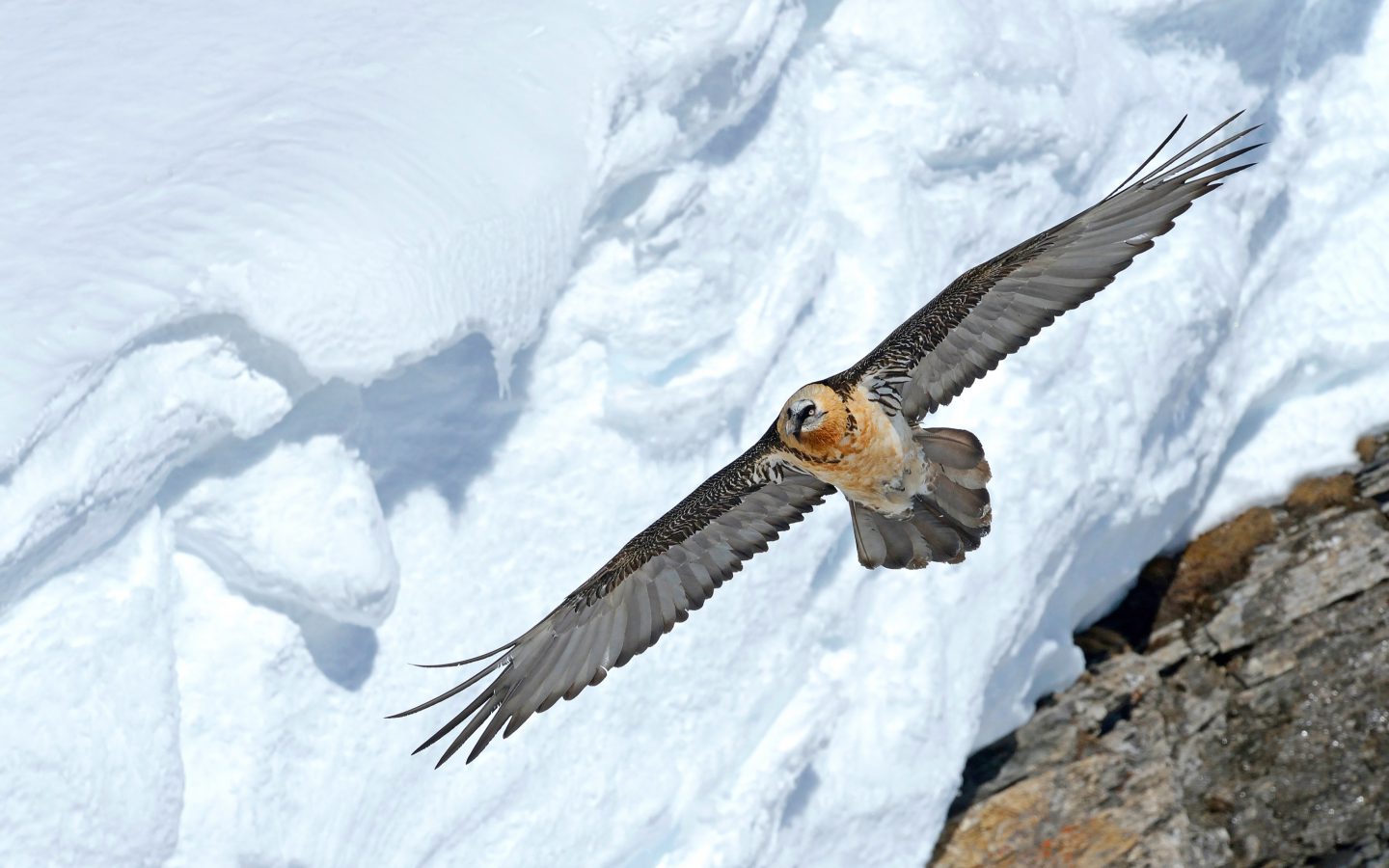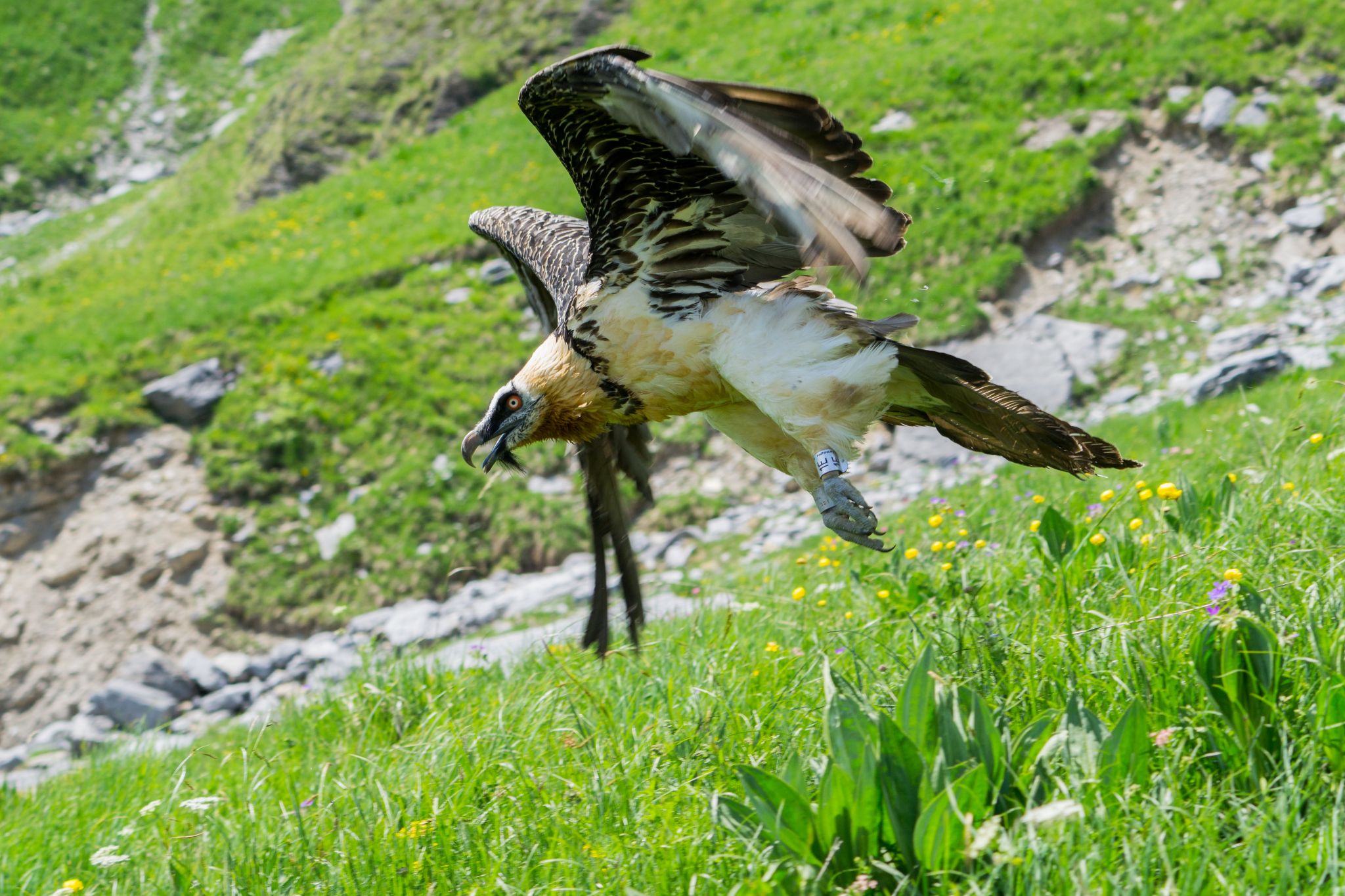Bearded Vultures (Gypaetus barbatus) were completely extirpated from the Alps in the early 20th century. The last individual was shot in the Aosta Valley, Italy, in 1913. Thanks to decades of collaborative conservation efforts, including the VCF-led reintroduction project launched in 1986, the species is once again soaring across the Alpine skies.
New research from D. Santos-Cottin, B. Arroyo, F. Loercher, A. Brambilla, and J. Terraube now offers the most comprehensive analysis to date of how Bearded Vultures are breeding across the Alpine range — and what factors influence their reproductive success.

From extinction to recolonisation
The Alpine reintroduction project began with the release of captive-bred birds, and ten years later, the first breeding pairs established themselves. In 1997, the first successful breeding event was recorded. Since then, the population has grown steadily.
By 2021, the Alps hosted 65 breeding pairs, and the number of fledglings had increased from zero in 1995 to 42 in 2021. However, this growth has not been evenly distributed across countries. Switzerland saw the largest increase in breeding pairs, while Austria had the smallest.
What determines breeding success?
In the recently published research, the evolution of Bearded Vulture breeding in different Alpine countries and regions was examined. The aim was to understand what factors explain regional differences in the number of breeding pairs and their success in raising young.
The study considered both environmental and individual variables:
- Environmental factors included nest location, the presence of protected areas, and food availability (measured via ibex density).
- Individual bird traits included origin (released or wild-hatched), age, years paired with the same partner, and parental relationships.
Key results
Overall breeding success across the Alps (measured as the proportion of occupied territories that produced a fledgling, out of 578) was 60%.
- France: 60%
- Italy: 64%
- Switzerland: 65%
- Austria: only 36%

Five main factors explained breeding success:
- Nest elevation (positive effect)
- Presence of protected areas (positive effect)
- Proportion of open areas (negative effect)
- Pair composition – pairs formed by two wild-hatched individuals had around 30% higher breeding success than mixed or fully released pairs
- Pair bonding duration – longer pair duration correlated with higher breeding success

Lessons for conservation
The results show that the Alpine Bearded Vulture reintroduction programme has been a major success, with a steady increase in both breeding pairs and fledglings over the years. Notably, reproductive success in the Alps is higher than in other regions such as the French and Spanish Pyrenees, even in areas with lower breeding performance or among less optimal pair compositions.
Interestingly, the number of birds released in a region did not predict breeding success. For example, the Eastern Alps saw the highest number of releases but recorded the lowest breeding success. This suggests other factors, such as adult survival, play a key role — particularly in the eastern and southern Alps, where survival rates are lower, as noted in a recent study (Schaub et al. 2024).
Another key finding: protected areas appear to support both the establishment and success of Bearded Vulture pairs. However, further research is needed to fully understand the roles of food availability and protected area networks in influencing long-term breeding outcomes.

A International Bearded Vulture Monitoring Network (IBM) is a unique international collaboration between national & natural parks and non-governmental organisations, coordinated by the Vulture Conservation Foundation (VCF), to monitor the population of the Bearded Vulture in Europe.
The IBM-network collects, shares and makes available Bearded Vulture data to everyone working for the species’ conservation. It also uses this data and discusses conservation strategies and priorities for this species worldwide. There are currently 18 partners and two associated organisations part of the IBM-network.



